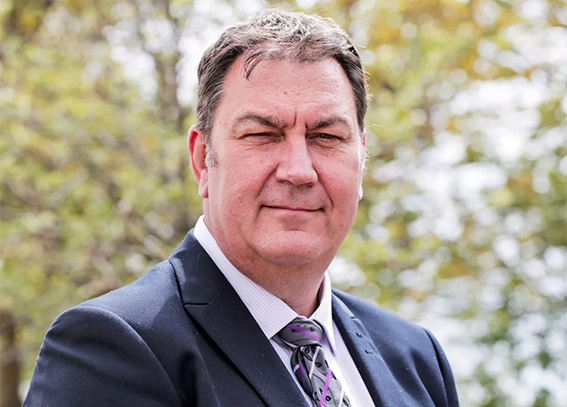
Can you turn your organisation around using three key questions?

THE CHALLENGE
Over the years, I’ve learnt that one of the most powerful tools a leader has at their disposal is the ability to ask questions. The right questions can challenge the status quo, spark creativity, and help to identify solutions. In the case of Cleveland Police, I revamped its scrutiny process and began by posing three key questions to my Chief Constable and his senior leadership team.
- What are you doing?
- When will you do it by?
- Who is accountable for delivering it?
It can’t be that simple, can it? Obviously not, it’s an organisation of over 2500 people with thousands more amongst its partners, but every change that’s required, and every process that’s failing, in this or any other organisation, can be improved upon by utilising these three simple questions. So, let’s delve deeper into each of these questions and
explore how they can be used to drive positive change.

WHAT ARE YOU DOING?
When faced with a complex challenge, it can be tempting to focus on the problems themselves. However, this can quickly lead to a feeling of overwhelm and paralysis. A more effective approach is to shift the focus to solutions.
The first question, “What are you doing?” prompts leaders to clearly define the actions that need to be taken to address the issues at hand. This question compels clarity and focus. It forces us to move on from finger pointing and complaining to concrete action planning.
In the context of Cleveland Police, this question was used during scrutiny sessions with the Chief Constable and senior officers. These sessions were designed to hold him, and his team, accountable for performance and to ensure that progress was being made. During these sessions, officers were required to outline the specific steps they were taking to improve performance across a whole range of areas, such as community
safety, reducing crime rates, and enhancing public trust.
It was hard work initially and I remember one of the early meetings where the silence was so deafening a so long that I expected to see tumbleweeds rolling across the screen of our Teams meeting! It got better though, and the new Chief Constable and his team bought into the benefits of working this way.
By the end of my term, the whole leadership team were clearly articulating their plans, and officers below them were also taking ownership of the turnaround process. Not only did this clarity of purpose lay the foundation for a more focused and effective approach to policing, but it also empowered the Chief Constable to motivate his team to be better prepared for our scrutiny sessions as we were all working to a clearly defined set of principles.

WHEN WILL YOU DO IT BY?
“What gets measured, gets done” is a well-worn adage that holds a great deal of truth. Setting deadlines and timelines is essential for driving progress and holding individuals accountable.
The second question, “When will you do it by?” injects a sense of urgency into the process of change. Without deadlines, tasks can easily be put off or indefinitely delayed. By setting clear deadlines, we create a sense of accountability and keep the momentum going.
The scrutiny sessions I held were not just about discussing plans – they were about establishing timelines for implementation. Officers were asked to specify when they would complete their action steps. This transformed these sessions into a mechanism for tracking progress and ensuring that commitments were met in a timely manner.
WHO’S ACCOUNTABLE FOR DELIVERING IT?
The key to pulling all this together though lies in question three. Having a plan and a deadline is a good start, but how do you ensure that the plan is actually executed? Assigning clear ownership and accountability for tasks is essential for ensuring that actions are completed effectively and efficiently.
This third question, “Who is accountable for delivering it?” places the onus on individual accountability. By requiring senior officers to identify who was responsible for each action item, scrutiny sessions became a forum for clarifying expectations and establishing a clear chain of accountability within the force.
A great example of this lies around the control room issues I mentioned earlier. We’d had two previous meeting where deadlines had shifted, and excuses were made. Enough was enough and when “who is accountable for delivering it” becomes “who is responsible if we miss another deadline” you really see a shift in attitude.
While the Chief Constable is always ultimately accountable, this approach ensured that everyone knew who was expected to deliver results. This emphasis on individual accountability empowered officers and staff to take ownership of their work and to be proactive in addressing challenges.
"SO, HAVE I CONVINCED YOU AN ORGANISATION CAN BE TURNED AROUND USING THESE THREE QUESTIONS?"

Do you now know where to start if you’re staring down a mountain of problems with no clear path forward?
I was fortunate enough to learn about the power of these three questions many years ago from a business mentor who not only showed me how and where to use them, but also how to ensure you stay on track as the results start to change.
True leadership is not only about applying the knowledge you’ve learned, but also about teaching those around you those skills as well to ensure that the foundations you put in place are solid enough for others to build on if they follow your design. It doesn’t matter if you’re in retail or running a tech start up – I know these three key questions can be your secret weapon. If my experience shows that these questions
transformed a failing Police Force, can they spark a turnaround in your business?
Give them a try and see what kind of positive change you can ignite.

Your first step on the leadership ladder




